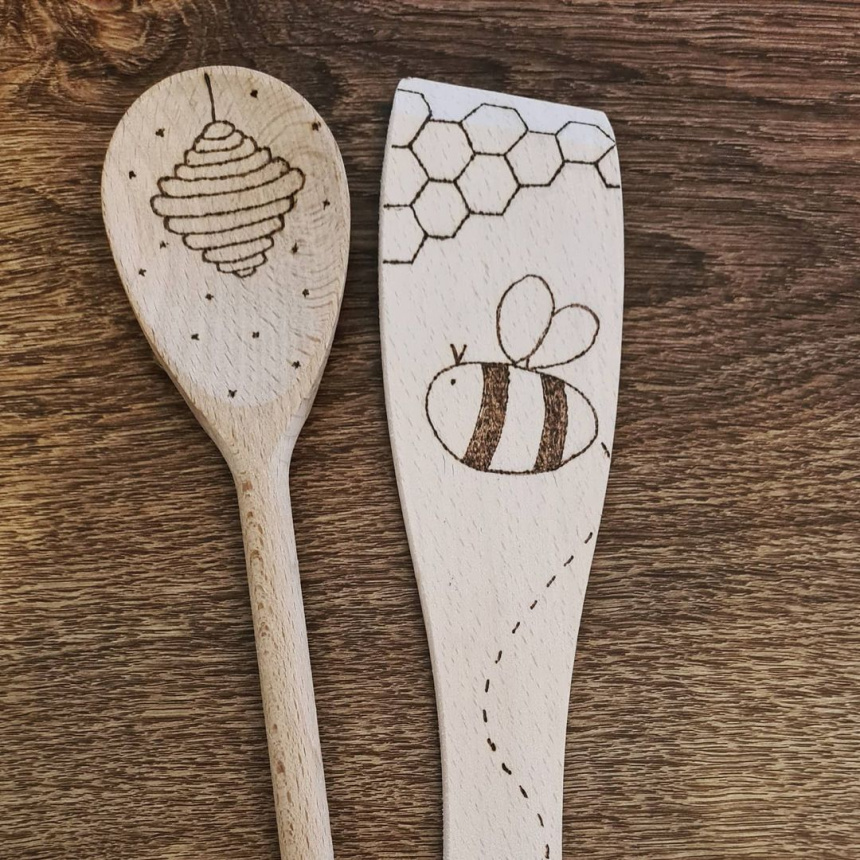We are used to wood and fire being incompatible, but in capable hands they become allies. There are two ways of treating and decorating the surface of wooden that are not related to carving but help to emphasize the volume and bring out the texture of the wood. These are art burning and firing. The first method is used to decorate flat or volumetric works. It is used more often for Applying ornaments on household objects and utensils. Burning is carried out with a special with electric devices. A blowtorch can be used. Have a metal stand for the heated tip. Do not overheat Do not overheat the tool, make sure that it charred, and not burns the surface. You can use the heated needle You can paint landscapes, compositions of fairy tales and even portraits with an incandescent needle. This is equivalent to outline, graphic or volumetric drawing on wood. Another option of treatment is direct firing. In this case, the relief and Plastic form, three-dimensional sculpture are processed with a blowtorch, gas torch or simply by an open flame. Burner, or simply an open flame of a fire. This method is more commonly used on textured woods, especially pine and spruce, which show off their resinous layer, creating a rhythmic, striped decorative surface.
Thanks to the firing, details are softened, volume transitions become smooth, the impression of flowing layers becomes stronger. The work becomes whole and complete. Before treatment with fire, the surface should be made smooth and traces of the cutter should be removed, Rub across the surface with an emery cloth. After firing, rub with a stiff clothing brush. You can also use a metal brush, running it with light pressure in the direction of the layers. To enhance the decorativeness and relief of the fired surface, I suggest making a step with a knife along each layer. This treatment requires patience, but the work is justified by the effect. Sometimes chemical solutions of hydrochloric acid are used instead of firing. It burns the surface, staining it a pleasant gray color, emphasizing the rhythm and fluidity of the layers. When using chemicals, be careful. Wear an apron, rubber gloves, and safety glasses. Before you carve a relief on textured pine, determine which side of the board the layers will show up more spectacularly. Preferably, the heartwood should be deeper than the front part of the relief and located in the middle of the workpiece or outside of it. .
